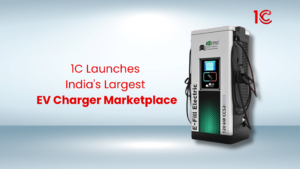
Menu
Menu

As the world shifts towards sustainable energy solutions, electric mobility is emerging as a key component in reducing carbon emissions and promoting environmental conservation. A critical aspect of EV adoption is the infrastructure that supports it, particularly the charging systems. Understanding the difference between AC (Alternating Current) and DC (Direct Current) charging is essential for EV owners, fleet operators, and anyone interested in the future of transportation. This article talks about the distinctions, advantages, and applications of AC and DC charging, providing a comprehensive guide to make informed decisions.

AC charging is the most common method for charging electric vehicles. It uses the alternating current from the grid, which is then converted into direct current by the vehicle’s onboard charger. This process is typically slower but is well-suited for overnight charging or when vehicles are parked for extended periods.

DC charging, also known as fast charging, bypasses the vehicle’s onboard charger by converting AC to DC within the charging station itself. This allows for a much higher power output, resulting in significantly faster charging times. DC chargers are commonly found in commercial locations, such as highway rest stops and dedicated charging hubs.
Also Read: Impact of DC Fast Charging on EV Battery

AC charging typically follows a linear curve up to a certain point. The power delivery remains relatively consistent, but as the battery capacity is about full, the rate of charging gradually decreases to prevent overcharging and to maintain battery health. This tapering effect is managed by the vehicle’s Battery Management System (BMS), ensuring safety and longevity.
DC charging follows a more complex curve compared to AC charging. Initially, the charging rate is extremely high, rapidly increasing the battery’s charge. As the EV battery reaches around 80% of its capacity, the charging rate slows down considerably to protect the battery from overheating and potential damage. This characteristic makes DC charging particularly useful for quick top-ups rather than full charges.
Also Read: How AC and DC are related?

When deciding between AC and DC charging, several factors come into play:
Also Read: Maintenance of an EV Charging Station
As EV technology evolves, the demand for faster charging solutions is likely to increase. Investing in DC charging infrastructure may offer a strategic advantage for businesses looking to cater to future needs and enhance their service offerings.
Both AC and DC charging have their unique advantages and are essential components of the EV charging ecosystem. AC charging is ideal for everyday use and cost-effective installations, while DC charging addresses the need for speed and convenience, particularly in commercial settings. As the EV market continues to grow, understanding these differences will help stakeholders make informed decisions, ensuring efficient and effective charging solutions.
By integrating diverse charging options and staying updated with technological advancements, we can accelerate the transition to electric mobility, contributing to a cleaner and more sustainable future. For comprehensive EV charging solutions, 1C stands at the forefront, offering innovative and reliable services to meet all your charging needs.
Share this article:
Follow us for more such content!






© 2024 Massive Mobility Private Limited. All rights Reserved